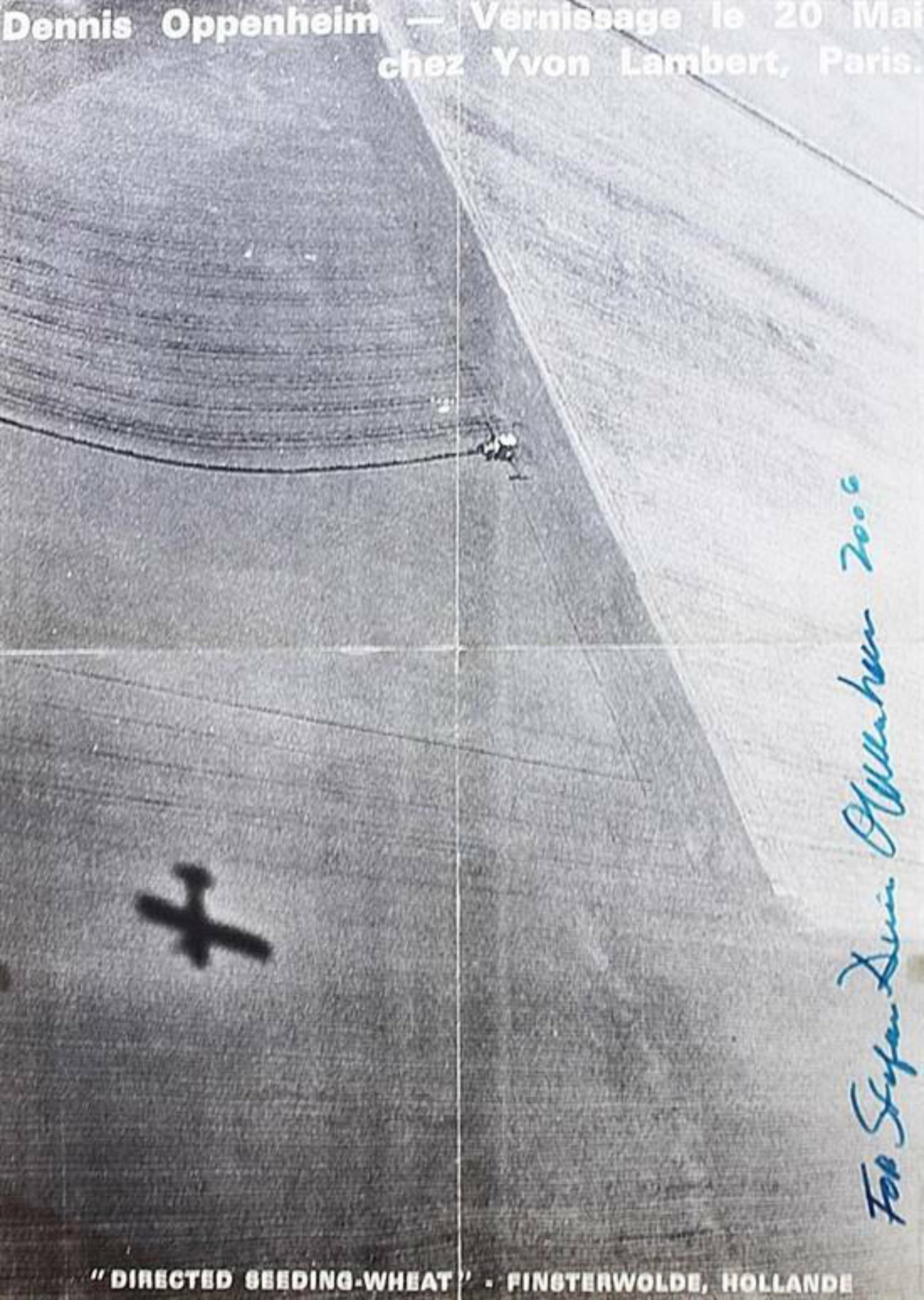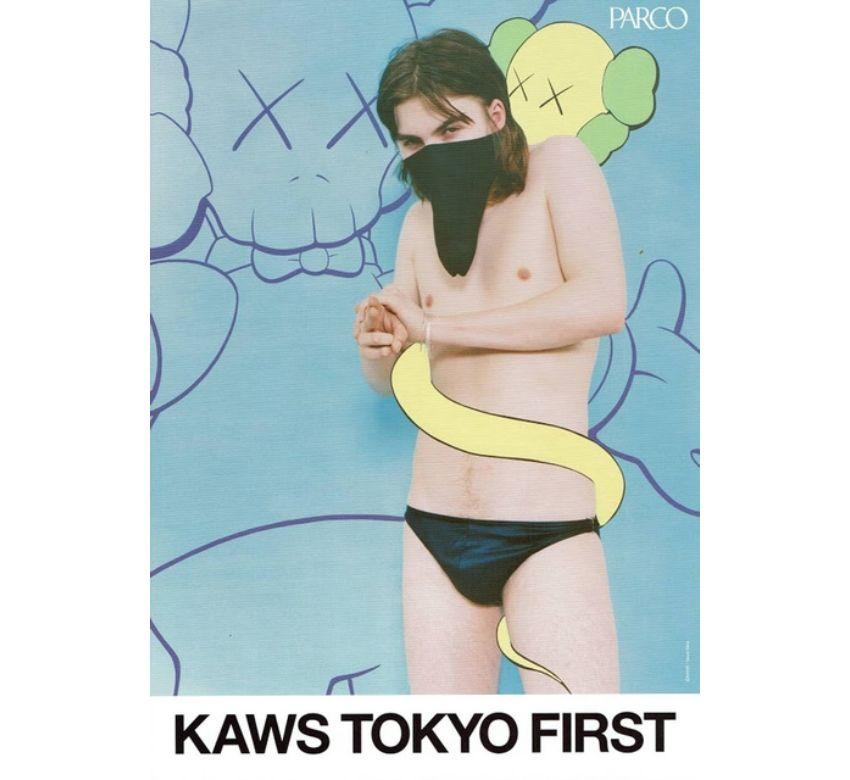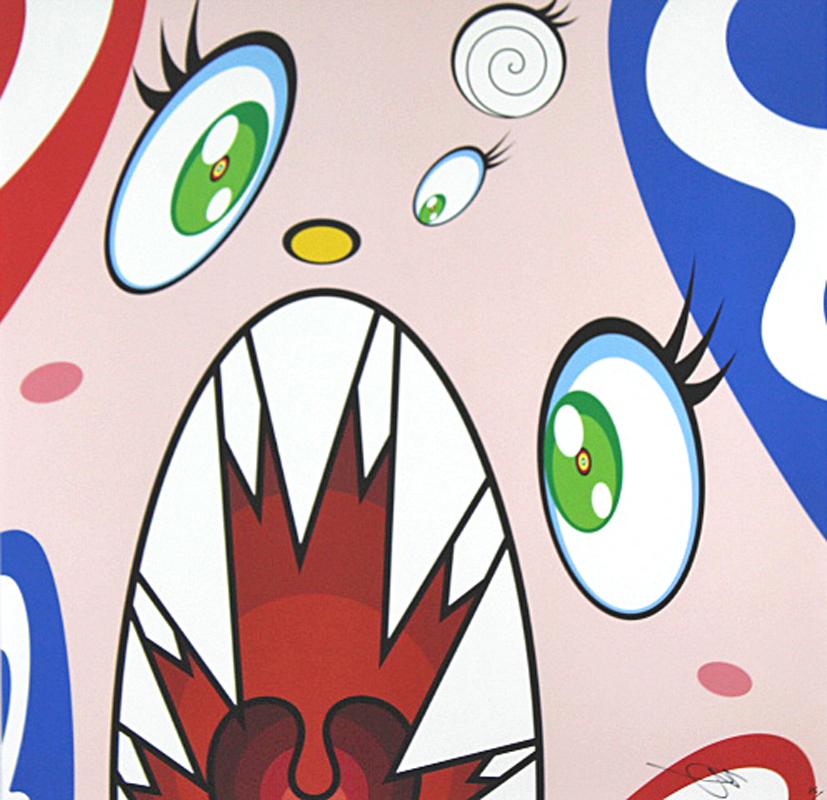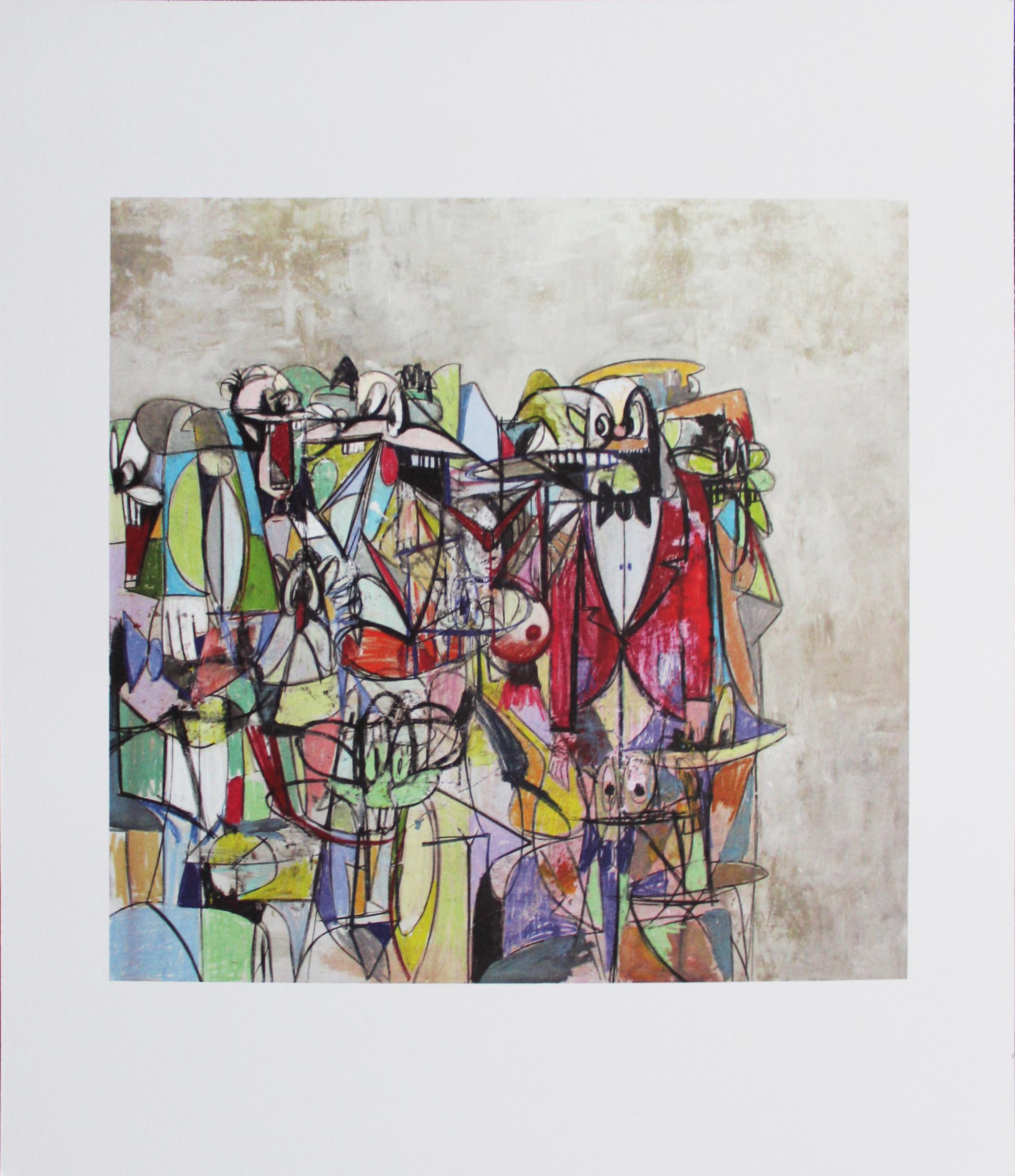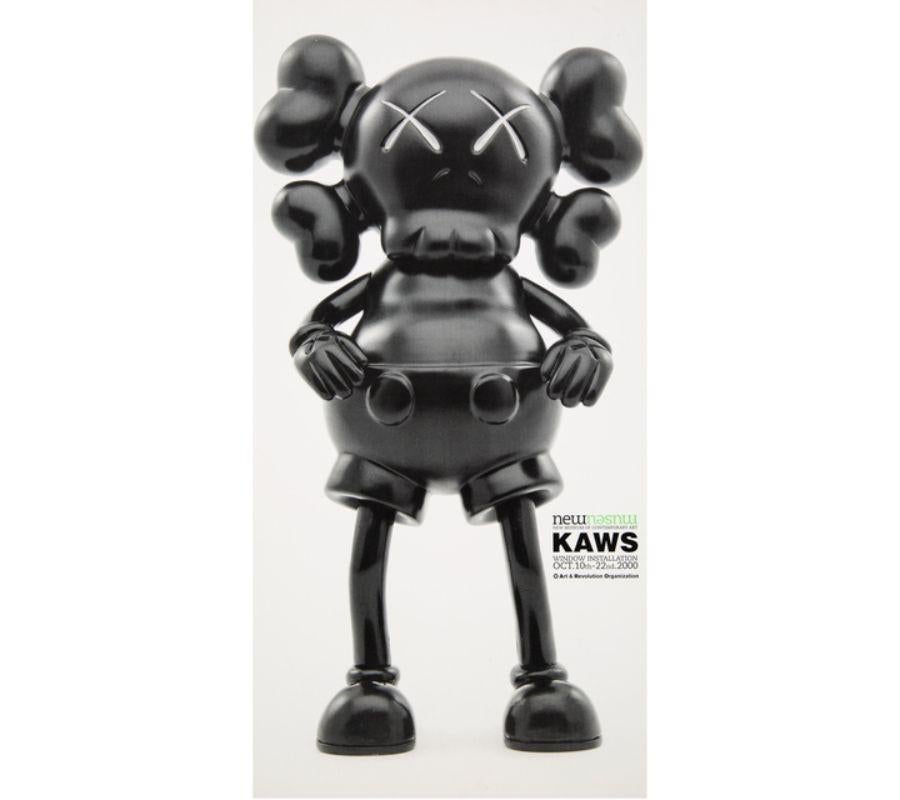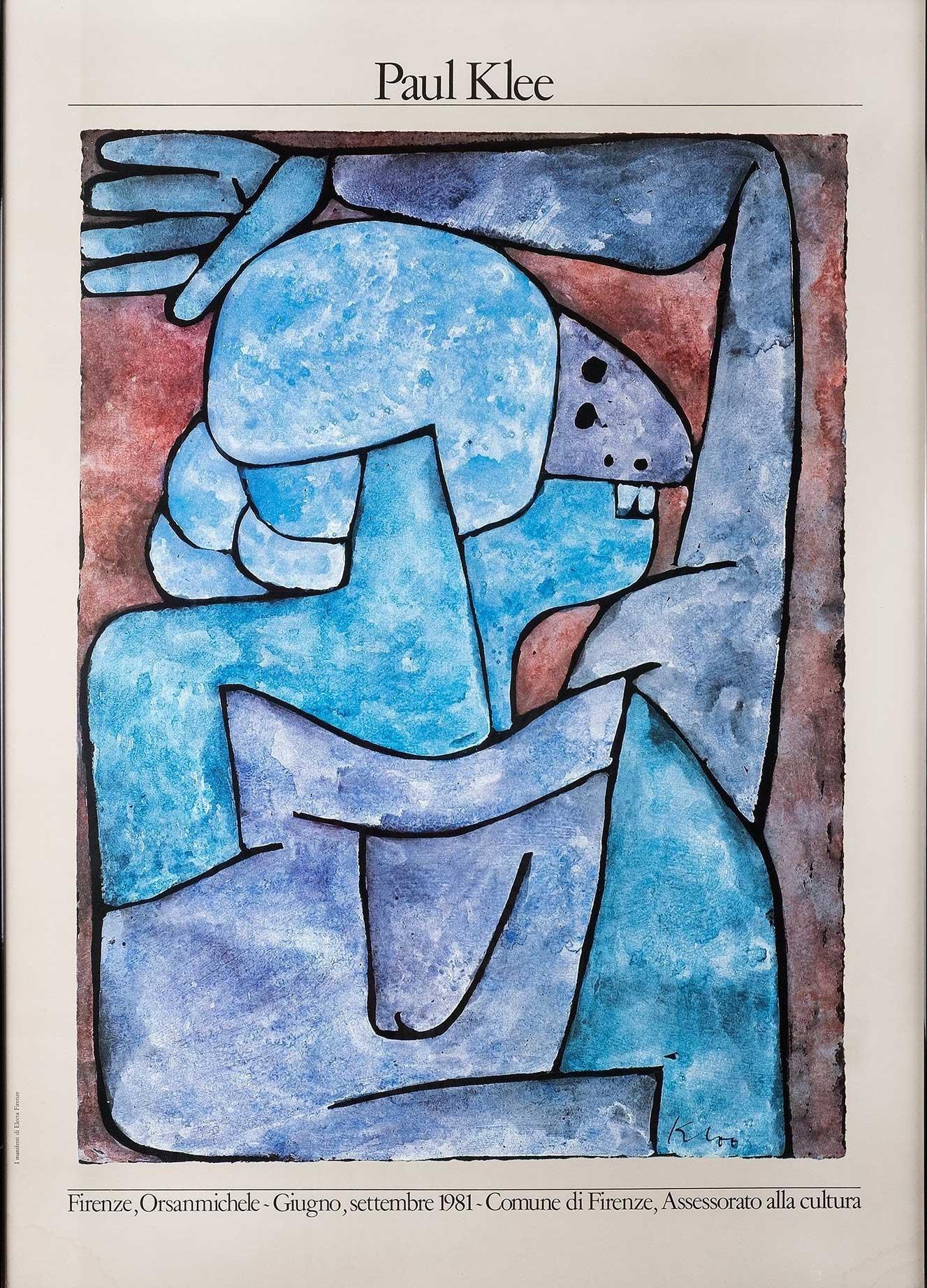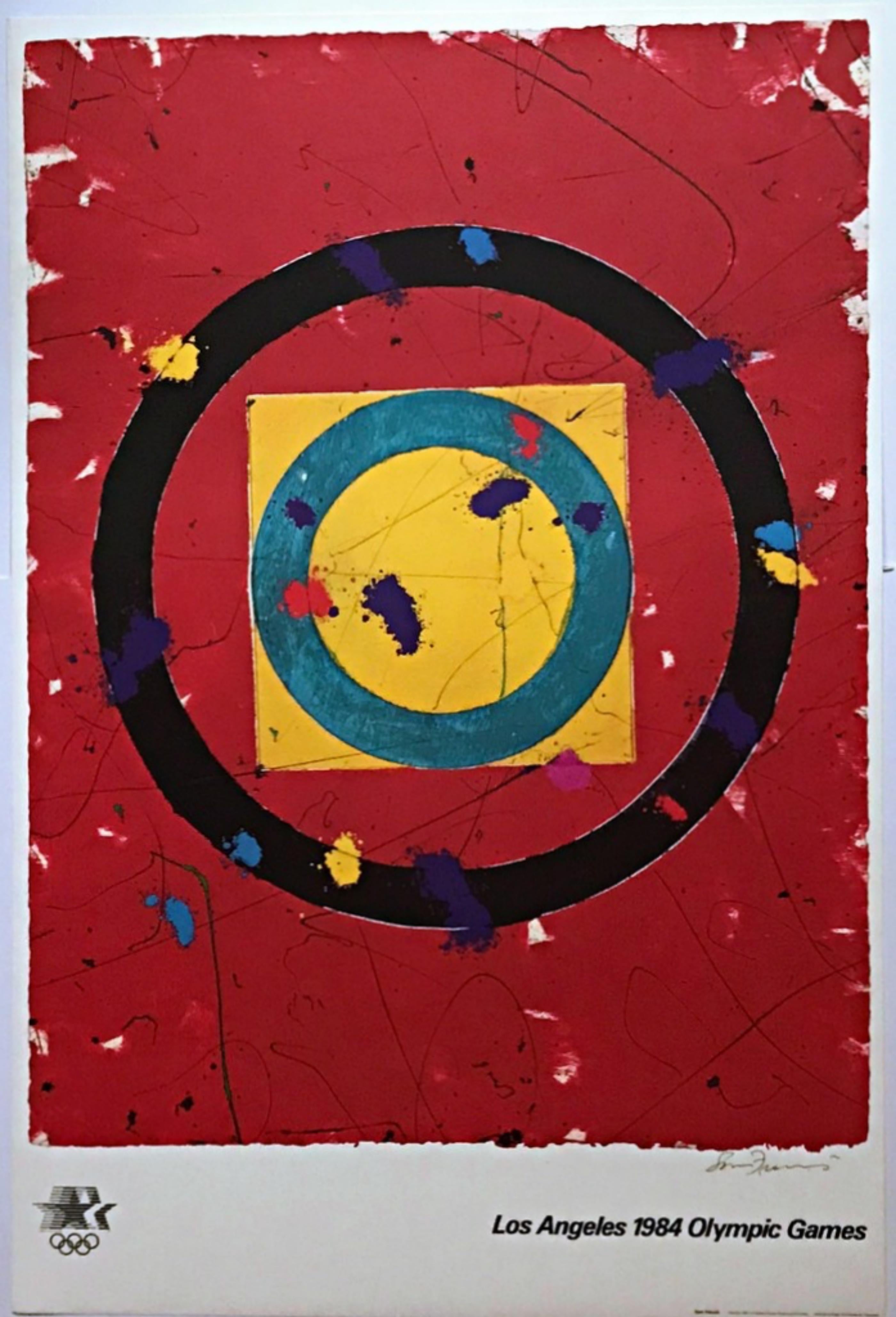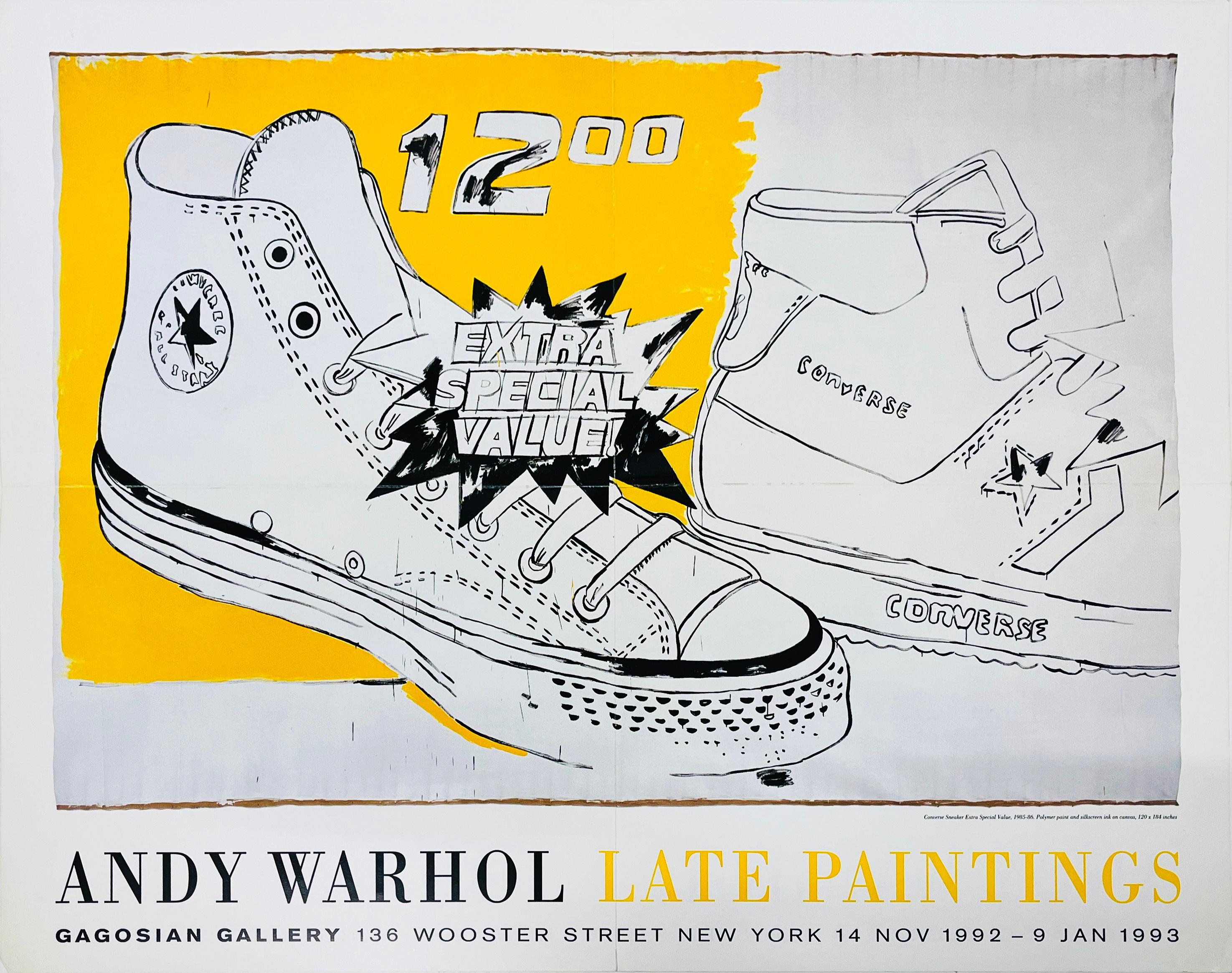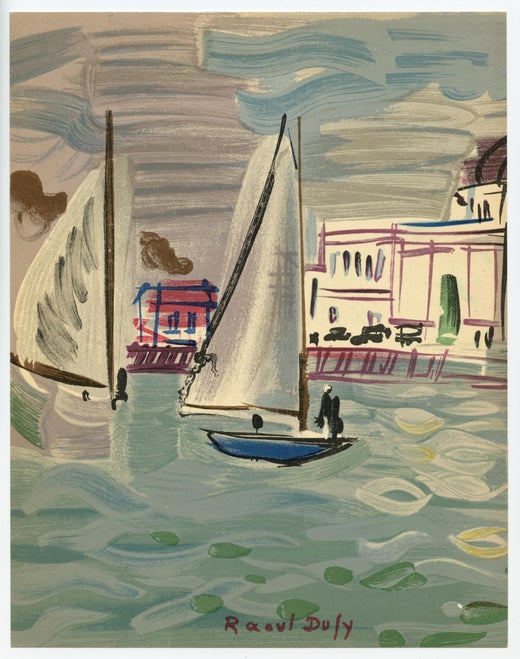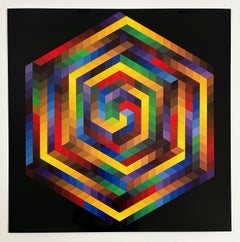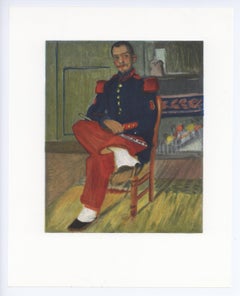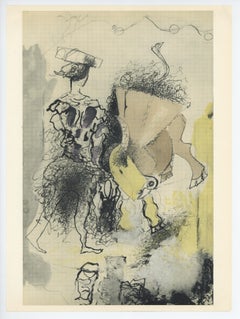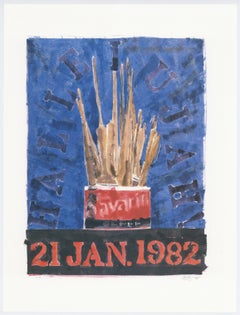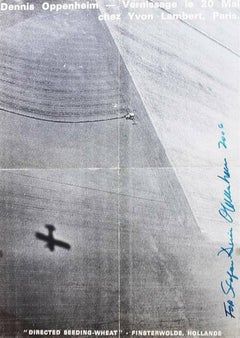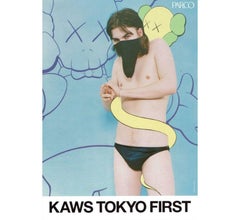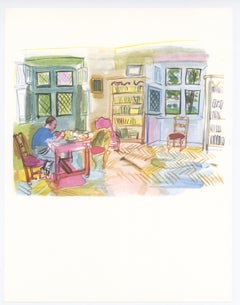
Le cabinet de travail
View Similar Items
Want more images or videos?
Request additional images or videos from the seller
1 of 2
(after) Raoul DufyLe cabinet de travail1970
1970
About the Item
- Creator:(after) Raoul Dufy (1877, French)
- Creation Year:1970
- Dimensions:Height: 11.93 in (30.3 cm)Width: 9.26 in (23.5 cm)
- Medium:
- Period:
- Condition:
- Gallery Location:Henderson, NV
- Reference Number:1stDibs: LU2365212878632
(after) Raoul Dufy
Raoul Dufy (1877 – 1953) was a French Fauvist painter, brother of Jean Dufy. He developed a colorful, decorative style that became fashionable for designs of ceramics and textiles, as well as decorative schemes for public buildings. He is noted for scenes of open-air social events. He was also a draftsman, printmaker, book illustrator, scenic designer, a designer of furniture, and a planner of public spaces. The impressionist landscape painters, such as Claude Monet and Camille Pissarro, influenced Dufy profoundly. Matisse's Luxe, Calme et Volupte, which Dufy saw at the Salon des Independants in 1905, was a revelation to the young artist, and it directed his interests towards Fauvism. Les Fauves (the wild beasts) emphasized bright color and bold contours in their work. Dufy's painting reflected this aesthetic until about 1909, when contact with the work of Cezanne led him to adopt a subtler technique. It was not until 1920, however, after he had flirted briefly with yet another style, cubism, that Dufy developed his own distinctive approach. It involved skeletal structures, arranged with foreshortened perspective, and the use of thin washes of color applied quickly, in a manner that came to be known as stenographic. Dufy's cheerful oils and watercolors depict events of the time period, including yachting scenes, sparkling views of the French Riviera, chic parties, and musical events.
About the Seller
5.0
Platinum Seller
Premium sellers with a 4.7+ rating and 24-hour response times
Established in 2006
1stDibs seller since 2023
482 sales on 1stDibs
Typical response time: 1 hour
Authenticity Guarantee
In the unlikely event there’s an issue with an item’s authenticity, contact us within 1 year for a full refund. DetailsMoney-Back Guarantee
If your item is not as described, is damaged in transit, or does not arrive, contact us within 7 days for a full refund. Details24-Hour Cancellation
You have a 24-hour grace period in which to reconsider your purchase, with no questions asked.Vetted Professional Sellers
Our world-class sellers must adhere to strict standards for service and quality, maintaining the integrity of our listings.Price-Match Guarantee
If you find that a seller listed the same item for a lower price elsewhere, we’ll match it.Trusted Global Delivery
Our best-in-class carrier network provides specialized shipping options worldwide, including custom delivery.More From This Seller
View All"Hat B"
By (After) Victor Vasarely
Located in Henderson, NV
Medium: offset lithograph (after Vasarely). Printed in 1972 in Neuchatel, Switzerland on thick, high-gloss paper and published by Editions du Griffon for the "Vasarely Progressions 1...
Category
1970s Op Art Prints and Multiples
Materials
Offset
Le Flutiste
By (after) Raoul Dufy
Located in Henderson, NV
Medium: offset lithograph (after the painting). Printed on Arjomari wove paper by Mourlot Frères and published in 1965 for Marcelle Oury's "Lettre à mon peintre". Image size: 8 x 6 1...
Category
1960s Prints and Multiples
Materials
Offset
Carnet Intimes
By (after) Georges Braque
Located in Henderson, NV
Medium: offset lithograph (after the watercolor sketch). Printed in 1955 by Draeger Freres, this composition is from George Braque's Intimate Sketchbooks (Carnets Intimes). Braque ha...
Category
1950s Prints and Multiples
Materials
Offset
Savarin
By (After) Jasper Johns
Located in Henderson, NV
Medium: offset lithograph (after the monotype). This is an offset lithograph reproducing one of Jasper Johns' Savarin monotypes, and it was printed by Norman Lithographers in 1982 an...
Category
1980s Prints and Multiples
Materials
Offset
"The Sun-Cloud" printed in 1905
Located in Henderson, NV
Medium: offset lithograph (after the painting). Published in London by The Studio in 1905 for a rare deluxe portfolio. Printed on smooth wove paper, the image measures 4 1/2 x 8 inch...
Category
Early 1900s Prints and Multiples
Materials
Offset
"Wart" original lithograph
By Robert Rauschenberg
Located in Henderson, NV
Medium: original offset lithograph. This work is also known as "Envelope". Rauschenberg executed this interesting Pop Art classic for Art In America in 1970. It consists of one compo...
Category
1970s Pop Art Prints and Multiples
Materials
Lithograph, Offset
You May Also Like
Yvon Lambert Gallery Poster (Hand Signed and Addressed by Dennis Oppenheim)
By Dennis A. Oppenheim
Located in New York, NY
Dennis Oppenheim
Directed Seeding -Wheat, Historic Yvon Lambert Gallery Poster (Hand Signed and Addressed by Dennis Oppenheim), 1969
Offset lithograph poster. Hand signed, inscribed. Postmarked and addressed to Oppenheim's dealer, John Gibson
23 × 16 inches
Hand Signed and inscribed by Dennis Oppenheim lower right in blue marker in 2006, hand addressed by Dennis Oppenheim in 1969 in red marker
Unframed
This is an extremely uncommon vintage poster/mailer announcing the May 20th, 1969 opening reception (Vernissage) for the exhibition of works by American conceptual art pioneer Dennis Oppenheim at the Yvon Lambert Gallery in Paris. The poster is historic in that it was originally mailed to John Gibson, the East 67th Street dealer, who famously gave Dennis Oppenheim his first New York exhibition in 1968, and it is hand addressed to Gibson, bearing the original Paris, France postmark of 1969. It is, exceptionally, hand signed and dedicated by Dennis Oppenheim to a collector who acquired the poster from John Gibson's collection, and then secured Dennis Oppenheim's autograph in 2006, making this an especially valuable collectors item.
More information about the project from the Tate Gallery archives, which acquired the work:
This work brings together two interventions Oppenheim created on a field owned by farmer Albert Waalken in Finsterwolde, north-eastern Holland, in 1969. It comprises four distinct elements mounted on board: a colour photograph of a wheatfield being sowed by a tractor in parallel curving lines seen from high up; a negative image in black and white of a map of the area of Finsterwolde onto which two sections of text have been collaged; and two black and white aerial photographs of the same field being traversed by a tractor cutting an X into the wheat. The first two elements relate to the action Directed Seeding. For this the field was seeded according to a line plotted by following the road from the village of Finsterwolde, the location of the field, to Nieuweschans, another village where the farmer’s storage silo for wheat was located. Oppenheim reduced this curved line by a factor of six in order to direct the trajectory of seeding. The tractor then carved a series of curved parallel lines on the surface of the field as it dug up earth and scattered seed. From an aerial perspective the patterning of parallel lines may be viewed as a form of line drawing on the landscape. The precise location of the field and the silo are indicated on the map, showing the trajectory of the road. The two sections of text collaged onto the upper portion of the map briefly describe the two interventions. Explaining the action Cancelled Crop, the artist wrote:
In September the field was harvested in the form of an X. The grain was isolated in its raw state, further processing was withheld. This project poses an interaction upon media during the early stages of processing. Planting and cultivating my own material is like mining ones own pigment (for paint) – I can direct the later stages of development at will. In this case the material is planted and cultivated for the sole purpose of withholding it from a product-oriented system. Isolating this grain from further processing (production of food stuffs) becomes like stopping raw pigment from becoming an illusionistic force on canvas. The esthetic is in the raw material prior to refinement, and since no organization is imposed through refinement, the material’s destiny is bred with its origin.
(Quoted from artist’s statement in Tate acquisition file.)
Directed Seeding and Cancelled Crop are two separate works, brought together in several different versions of which Tate’s is one. The collage presents three ways in which human action may marks the land. For the first two, agricultural machinery is used to create straight lines, in the process of harvesting as in the X of Cancelled Crop, or curved lines, during the process of planting seed in the contours photographed for Directed Seeding. The map shows a third (and more ancient) way of marking the land, through the construction of roads. The use of the landscape – natural, industrial or urban – as a canvas on which to act is typical of Oppenheim’s work in the late 1960s and early 1970s. In a related action, Directed Harvest, 1966 (Tate T07590) and Directed Harvest 1968 (Kröller-Müller Museum, Otterlo, Netherlands), the artist caused a field to be harvested in linear patterns which he then had photographed in its progressive stages. In Reverse Processing: Cement Transplant, East River, NY, 1970, 1978 (Tate T07591) Oppenheim drew large crosses on the roofs of barges transporting raw cement that he found moored on the New York East River banks. All these works centre on process as an agent of change and utilise materials, elements and locations on which the artist can have no permanent claim, making them deliberately ephemeral. Such actions as seeding a crop and harvesting it several months later operate within time parameters dependent on the cycles of the seasons rather than the will of man, mixing human processes with those of nature. Oppenheim’s analogy between the prevention of a crop from entering the food chain and the halting of the expressive, ‘illusionistic’ force of paint deconstructs the sophisticated processes of art-making and the food industry to the elemental notion of making simple marks on the environment. In this way, the artist highlights contemporary man’s dependency on complex chains...
Category
1960s Conceptual Abstract Prints
Materials
Offset, Lithograph
John Lennon & Yoko Ono, "Art is Over" poster from the legendary ICONS exhibition
By Mr. Brainwash
Located in New York, NY
Mr. Brainwash (after)
John Lennon & Yoko Ono from the legendary ICONS exhibition, 2010
Offset lithograph poster on gloss paper stock with deep saturated vibrant ink colors
Plate sig...
Category
2010s Street Art Figurative Prints
Materials
Offset
Where There Is Love There Is Life NYC ICONS Show
By Mr. Brainwash
Located in Draper, UT
Controversial L.A. “street artist”, Mr. Brainwash takes to the New York City art scene with the opening of his “Icons” show in the meat packing district on Sunday February 14th. First brought to the public eye when LA Weekly profiled the artist in a cover story, Mr. Brainwash continues to be a much-discussed figure as the star of infamous street artist Banksy’s documentary “Exit Through the Gift Shop”, which premiered last month at the Sundance Film Festival.
Thierry Guetta or “Mr. Brainwash” jam packed his massive art Icons show into two floors of a 15,000 square foot space. The show features portraits of pop culture icons; Madonna, Obama, Michael Jackson, James Brown and the Beatles, among many others, all interpreted through old broken records placed on canvas and silk screens with touches of spray paint. Wether you love him or you hate him, Art Icons is sure to be one of the largest and most lavishly funded art shows of the decade.
Mr. Brainwash: Icons is ran from March 31 at 415 West 13th Street between Ninth Avenue and Washington Street in the Meatpacking District...
Category
2010s Pop Art Figurative Prints
Materials
Offset
Tokyo First mini poster
By KAWS
Located in Washington , DC, DC
A relic from the early days of streetwear culture in 2001, this mini poster features a photograph by reknown photographer David Sims reworked by KAWS in his interventionist style. A Kimpsons Krusty the Clown is in the background while a KAWS Bendy wraps itself around the model. On the reverse is information about KAWS's exhibition at Parco Gallery in Tokyo. Sponsors include Supreme and A Bathing Ape...
Category
21st Century and Contemporary Contemporary Prints and Multiples
Materials
Offset
$680 Sale Price
20% Off
We Are The Square Jocular Clan
By Takashi Murakami
Located in Washington , DC, DC
Signed and numbered from an edition of 300
Comes framed and ready to hang
Category
2010s Contemporary Abstract Prints
Materials
Offset
$2,280 Sale Price
20% Off
Plate 13, Compression IV
By George Condo
Located in Washington , DC, DC
Released as part of a portfolio in a limited edition of 400 on the occasion of George Condo's exhibition "Drawing Paintings" at Skarsketdt Gallery in 2011. Unsigned and unnumbered
S...
Category
2010s Abstract Abstract Prints
Materials
Offset
$2,280 Sale Price
64% Off
Recently Viewed
View AllMore Ways To Browse
Ed Ruscha Clock
Editions Dube
Eileen Mayo
Ernie Barnes
Erte Bottles
Erte Letter C
Erte Spring
Fermin Hernandez
French Posters With Josephine 1920s
Futura On Sale
Galeria Katarzyna Napiorkowska
Georg Gerster
Gilbert Magu Lujan
Giuseppe Guerreschi
Goldie Lipson
Gonville Caius
Gross Domestic Product Banksy
Grosz Interregnum
